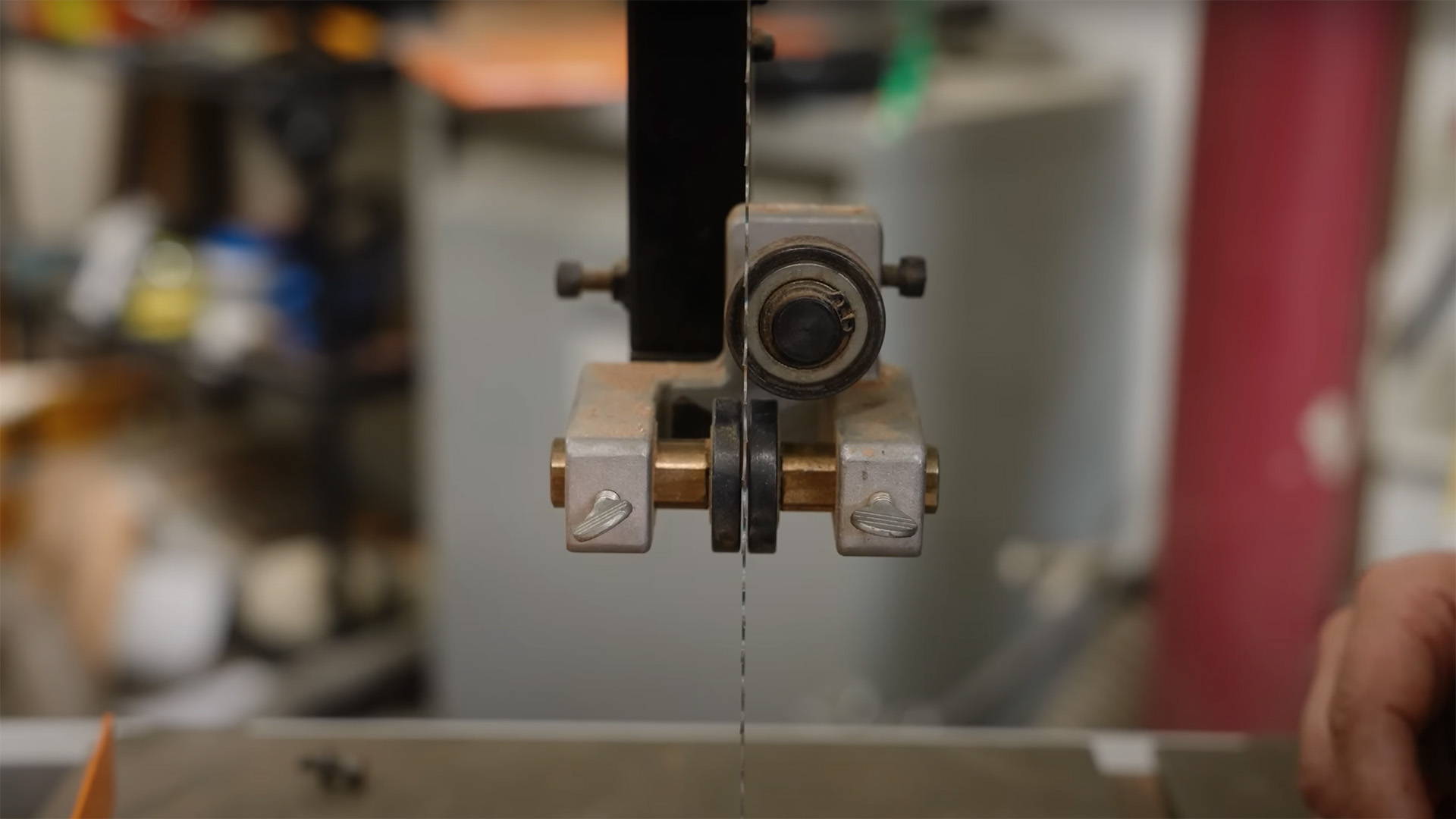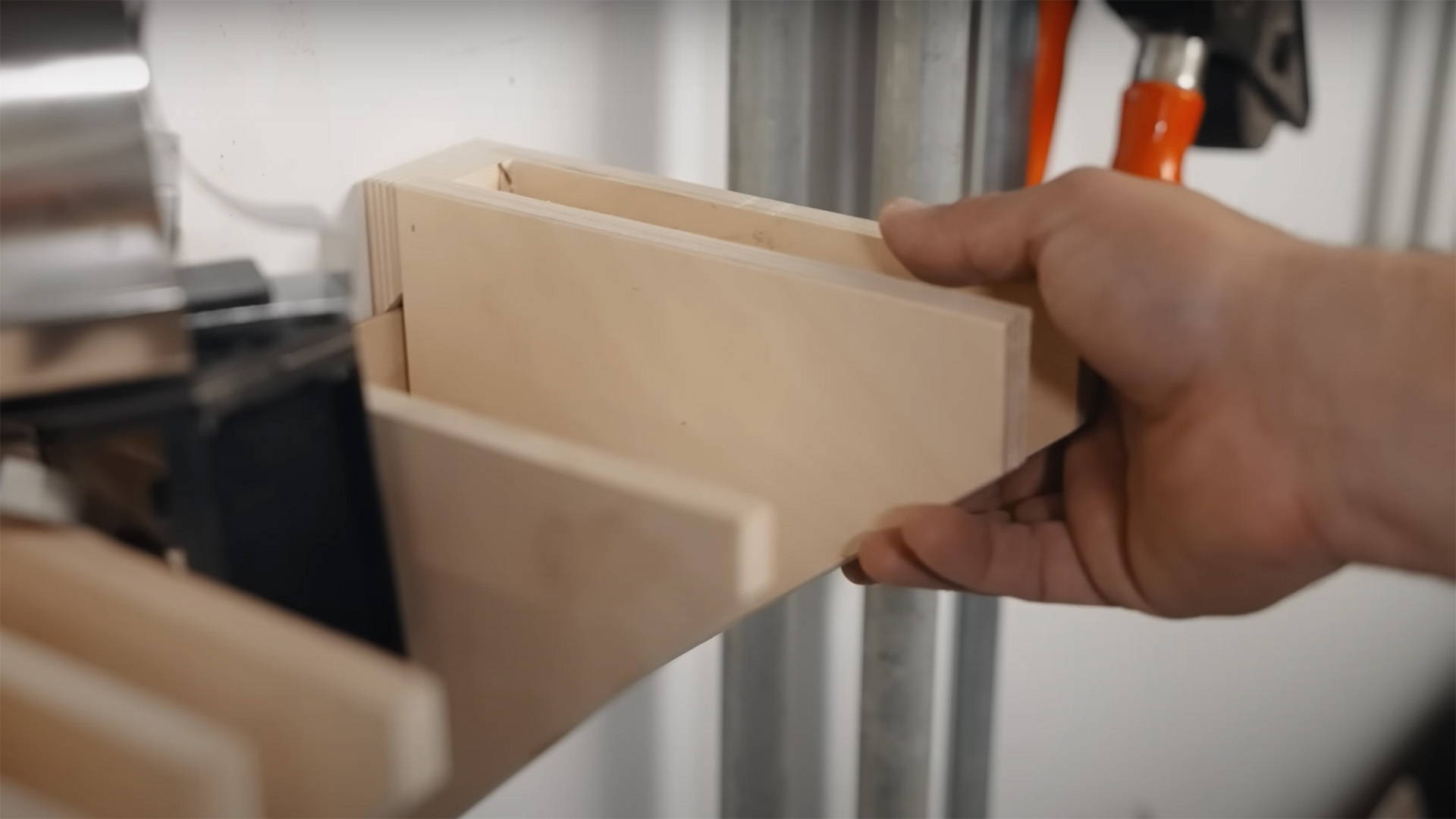Sometimes, you need to crosscut a board on your table saw that’s wider than your crosscut sled.
And that means you can't use a stop block on your sled. So how can you make multiple repeatable cuts?
Your first thought might be to use your table saw fence as a stop…
DON’T DO IT.
If you do, the unsupported offcut between the fence and blade can get pinched.
And if it does, it’ll kick back faster than you can say ER.
But there’s a simple solution that lets you stay safe while using your table saw fence as a stop.
And all it takes is some kind of block. Let me explain.
What you need to do is attach or place a block on the user-side of the fence before the blade.
It can be:
- A scrap piece of wood held in place with fence clamps or double stick tape
- A machinist 1-2-3 block
- Any rigid and square knick-knack you have lying around
Before making the cut, bump your board against this block. Hold it in this position on your sled, then make the cut.
What’s critical is that the end of the board is no longer touching the block as it passes through the blade.
This eliminates the chance of the offcut getting pinched between the blade and fence — giving you repeatable results without the risk of a kickback.
Make sure to account for the thickness of the block when setting up your fence (1-2-3 blocks make it easy since you just add 1” to your fence position).
If you use a miter gauge more often than a crosscut sled, this tip is especially useful.
Want to know more beginner table saw mistakes to avoid? Read this.
Any additions to the tip above? Let us know in the comments below!
Follow us on Instagram @katzmosestools, on TikTok @katzmoseswoodworking, and check out my YouTube channel for more great woodworking content...
And as always, STAY SAFE IN THE SHOP!











6 comments
Augusta Fencing
Using your table saw fence as a stop block can be dangerous, as it may cause the offcut to get trapped between the blade and fence, leading to potential kickback. Instead, clamp a spacer block to the fence, position your workpiece against it, and then remove the block before cutting to ensure safety and achieve repeatable results. Click here – https://www.augustafencingcontractors.com/
Using your table saw fence as a stop block can be dangerous, as it may cause the offcut to get trapped between the blade and fence, leading to potential kickback. Instead, clamp a spacer block to the fence, position your workpiece against it, and then remove the block before cutting to ensure safety and achieve repeatable results. Click here – https://www.augustafencingcontractors.com/
Lynette Landry
I am getting to put together the mini router table designed by 3×3 and you. Can’t you resend the leveling instructions
I am getting to put together the mini router table designed by 3×3 and you. Can’t you resend the leveling instructions
mardukes
I get it. There’s a kickback tendency for a piece between the blade and the fence. What I don’t get is why it’s not a risk on the side — why a stop on the sled fence doesn’t present the same phenomena.
I get it. There’s a kickback tendency for a piece between the blade and the fence. What I don’t get is why it’s not a risk on the side — why a stop on the sled fence doesn’t present the same phenomena.
Gregory Rust
I use the newer Delta Unisaw w/ Biesmeyer fence and follow your technique. The caution is when cutting long narrow and lightweight pieces as they may spin at the end of the cut and get caught between the blade and the fence. I would suggest a minimum stop block width of two inches when the cutoff piece is lightweight or long and narrow.
I use the newer Delta Unisaw w/ Biesmeyer fence and follow your technique. The caution is when cutting long narrow and lightweight pieces as they may spin at the end of the cut and get caught between the blade and the fence. I would suggest a minimum stop block width of two inches when the cutoff piece is lightweight or long and narrow.
Peter O'Donnell
There’s one more option depending on the fence model you’re using. My Delta table saw came with a Delta Unifence, which has two ‘lock down’ screws that allow me to adjust the fence parallel to the saw blade. That’s how I apply the principles taught in this tip. Faced with the same challenge, I can pull the fence back so the leading edge is well clear of the blade, and use my regular mitre fence to feed the material. I also like that the Unifence can be rotated to offer a very low profile face. The fence has a separate measurement line to adjust for cut thickness depending on the chosen profile. That’s why I’ve never converted to Biesmeyer… it’s a great fence but I love the Unifence’s flexibility.
There’s one more option depending on the fence model you’re using. My Delta table saw came with a Delta Unifence, which has two ‘lock down’ screws that allow me to adjust the fence parallel to the saw blade. That’s how I apply the principles taught in this tip. Faced with the same challenge, I can pull the fence back so the leading edge is well clear of the blade, and use my regular mitre fence to feed the material. I also like that the Unifence can be rotated to offer a very low profile face. The fence has a separate measurement line to adjust for cut thickness depending on the chosen profile. That’s why I’ve never converted to Biesmeyer… it’s a great fence but I love the Unifence’s flexibility.
Eric miller
Love your stop block tried to review it wouldn’t send.
Love your stop block tried to review it wouldn’t send.